
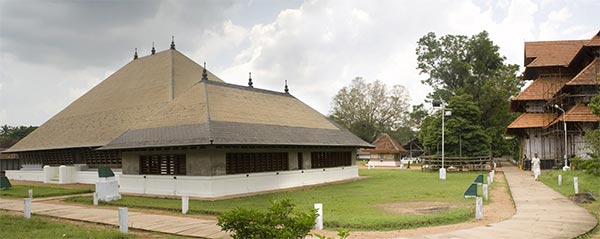 |
|
Sree Vadakkunnathan Temple of India. [Photo/UNESCO] |
The Conservation of the Sree Vadakkunnathan Temple in Kerala, India has received the Award of Excellence in this year's UNESCO Asia-Pacific Awards for Cultural Heritage Conservation.
Five sites in China received the recognition, including Honorable Mentions for YHA Mei Ho House Youth Hostel in Hong Kong Special Administrative Region and San Fang Qi Xiang in Fujian province, Awards of Merit for Pingyao Traditional Courtyard House in Shangxi province and the Cangdong Heritage Education Center in Guangdong province, as well as an Award of Distinction for Saltpans of Yim Tin Tsai in Hong Kong.
Xieng Thong Temple in Luang Prabang won the Award of Merit and became the first project in Lao PDR to receive the award.
A total of 12 winning projects from India, China, Lao PDR, Australia and Thailand have been recognized in this year's Heritage Awards.
Tim Curtis, Chair of the Jury and Chief of UNESCO Bangkok's Culture Unit, said he was impressed with the quality of the entries received this year as well as the geographical expanse they covered, showing that the awards’ message of the importance of cultural preservation is gaining momentum in the region.
"The Jury were very pleased with this year's submissions, which included fascinating projects from across Asia Pacific. This reflects a continuing trend over the years where we are seeing a broader diversity of typologies being submitted to the Awards coming from a wider geographical spread," said Curtis.
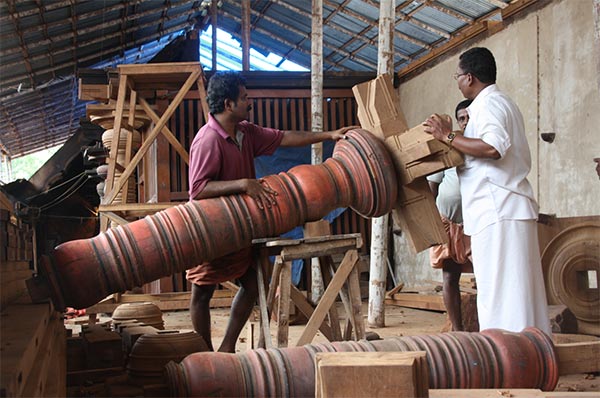 |
|
Sree Vadakkunnathan Temple of India. [Photo/UNESCO] |
The Award of Excellence for the Conservation of Sree Vadakkunnathan Temple, Thrissur in Kerala,
India recognizes the remarkable conservation effort undertaken at the sacred site which employed age-old rituals and conservation techniques drawn from vastu shastra, an Indian traditional science focusing on architecture and construction. As such, the tangible attributes of the temple are inextricably linked with its intangible heritage which dates back generations.The Asia-Pacific Awards for Cultural Heritage Conservation recognizes the efforts of private individuals and organizations that have successfully restored and conserved structures and buildings of heritage value in the region. Through recognizing private efforts to restore and adapt historic properties, the awards aim to encourage other property owners to undertake conservation projects within their communities, either independently or by seeking public-private partnerships.
A panel of international conservation experts met in June to review 36 entries from across the Asia-Pacific region. Winners were selected based on how the projects reflected a clear understanding and application of various criteria, such as the articulation of the spirit of place, technical achievement, appropriate use or adaptation, and the project's contribution to the surrounding environment as well as the local community's cultural and historical continuity.
Eligible projects must be more than 50 years old and the restoration must have been completed within the past 10 years. Buildings with a new use must have also been in viable use for at least one year from the date of the awards announcement.
Other Awardees included:
Awards of Distinction:
Saltpans of Yim Tin Tsai, Hong Kong, China
J.N. Petit Institute, Mumbai, India
Awards of Merit:
Cangdong Heritage Education Centre, Kaiping, Guangdong province, China
Pingyao Courtyard House, Shanxi province, China
Xieng Thong Temple, Luang Prabang, Lao PDR
Baan Luang Rajamaitri, Muang District, Chantaburi, Thailand
Honourable Mention:
Wanslea Cancer Wellness Centre, Cottesloe, Western Australia, Australia
Sanfang Qixiang, Fuzhou, Fujian province, China
Parvati Nandan Ganapati Temple, Pune, Maharashtra, India
YHA Mei Ho House Youth Hostel, Hong Kong, China
Award for New Design in Heritage Contexts:
Port Arthur Penitentiary, Tasmania, Australia
Award of Distinction
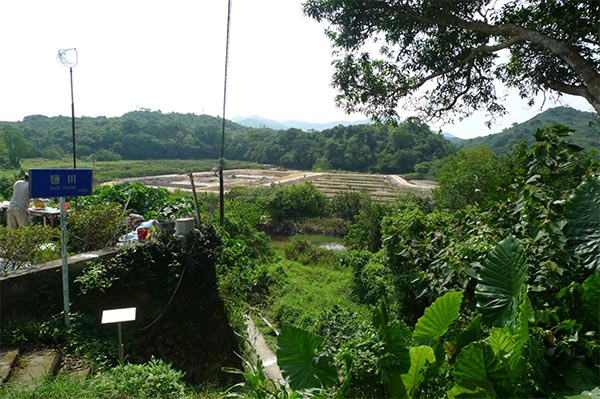 |
|
Saltpans of Yim Tin Tsai, Hong Kong. [Photo/UNESCO] |
Project name: Saltpans of Yim Tin Tsai
Location: Hong Kong, China
The revitalization of the saltpans of Yim Tin Tsai Island in a rural area of Hong Kong SAR celebrates an overlooked form of industrial heritage and contributes to pushing the envelope of conservation practice. The project overcame the lack of historical records by using a field-based methodology of in situ investigation to inform the conservation process. The conservation work employed simple local building materials and techniques to return the saltpans to functioning condition. The saltpans now serve as an educational hub for students and as an eco-tourism destination for a growing number of visitors. Coordinated by the members of the Chan clan who originally built the saltpans, the project has rekindled an interest in the history of Hong Kong’s early development and sets an innovative approach to the conservation of industrial heritage landscapes.
Award of Merit
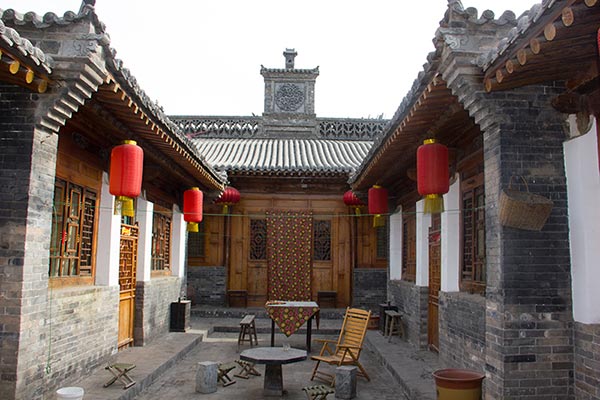 |
|
Ping Yao Courtyard Houses of Shanxi province. [Photo/UNESCO] |
Project name: Ping Yao Courtyard Houses
Location: Shanxi province, China
The pilot restoration of 53 courtyard houses in the Ancient City of Ping Yao World Heritage property serves as a noteworthy model for the conservation of privately-owned vernacular buildings which are increasingly vulnerable across the region. Through a wide-ranging partnership involving local authorities, national experts and international heritage organizations, the project provided technical advice and funding subsidies to enable homeowners to restore their dilapidated residences. The work was carried out by experienced craftspeople using traditional construction techniques and materials, thus retaining material authenticity while sustaining local building traditions. Technical manuals were developed to ensure these high standards are applied in future restoration, adaptation and maintenance efforts. Through a combination of demonstration projects, technical capacity building and new financing models, the initiative makes a significant contribution to the long-term viability of Ping Yao courtyard houses.
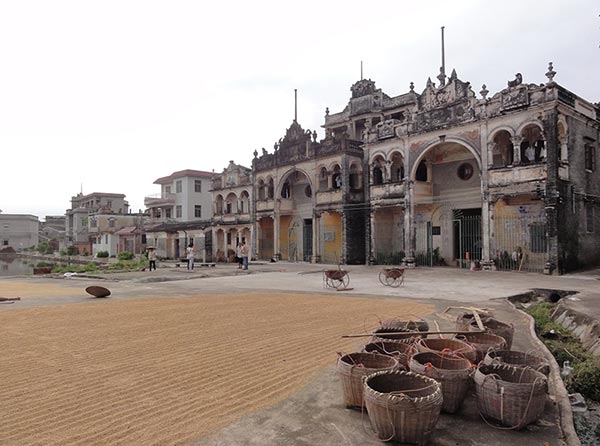 |
|
Cangdong Heritage Education Centre of Guangdong province. [Photo/UNESCO] |
Project name: Cangdong Heritage Education Centre
Location: Guangdong province, China
Using a multi-pronged approach, the project to establish the Cangdong Heritage Education Centre has helped to reverse the gradual abandonment of this once-prosperous farming community in Guangdong Province. Located near the Kaiping Diaolou and Villages World Heritage property, the village contains noteworthy architectural typologies dating to the Ming Dynasty which the project has selected for conservation, resulting in the sensitive restoration of two ancestral halls, a defensive watchtower and the Furen Temple. By designing an outreach program targeting youth, the project has helped to raise awareness and concern about local heritage among the younger generation. The commendable efforts of community members, patrons and conservationists have realized an ambitious new vision for the revitalization of the village.
Honorable Mention
 |
|
Sanfang Qixiang of Fujian province. [Photo/UNESCO] |
Project name: Sanfang Qixiang
Location: Fuzhou, Fujian province, China
The revitalization of Sanfang Qixiang has saved this traditional urban settlement from imminent redevelopment and promoted widespread recognition of the historically significant "Three Lanes and Seven Alleys" district. The project demonstrates a meticulous and comprehensive approach to conservation planning at the scale of both individual buildings and the larger landscape, drawing upon extensive archival research, in situ investigation and international conservation principles. The once deteriorated buildings were restored in an authentic manner using traditional building techniques and materials. The well-organized tourism strategy and appropriate land use control measures have maintained the serenity of this historic neighborhood. The culmination of this ten-year project directly contributed to the revival of community life and led Sanfang Qixiang to become a model for many historical areas in China.
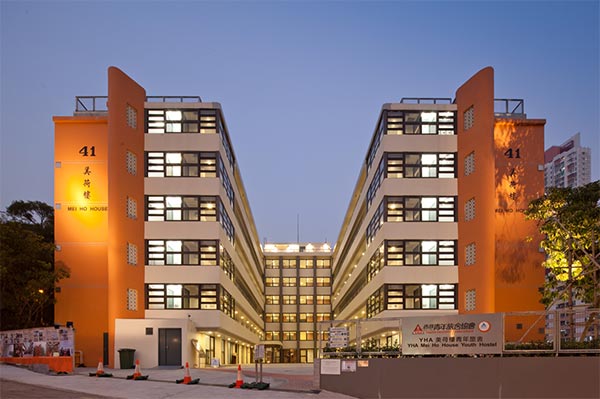 |
|
YHA Mei Ho House Youth Hostel of Hong Kong. [Photo/UNESCO] |
Project name: YHA Mei Ho House Youth Hostel
Location: Hong Kong, China
The transformation of the abandoned Mei Ho House into a youth hostel and heritage museum has successfully extended the life of the territory's first public housing complex. The conservation work is commendable for its nuanced approach to retaining the hallmarks of period architecture while sensitively inserting contemporary amenities catering to the building's new function. The impressive efforts to reach out to former residents and record oral histories have enriched the site interpretation and created the vibrant Mei Ho House Alumni Network. The project has a catalytic impact in the larger renewal of Shek Kip Mei as one of the city's new cultural hubs. The restoration of the Mei Ho House has preserved an important chapter in the social history of Hong Kong and demonstrates the enduring value of the Modern typology of social housing.

Presented by Chinadaily.com.cn Registration Number: 10023870-7
Copyright © Ministry of Culture, P.R.China. All rights reserved